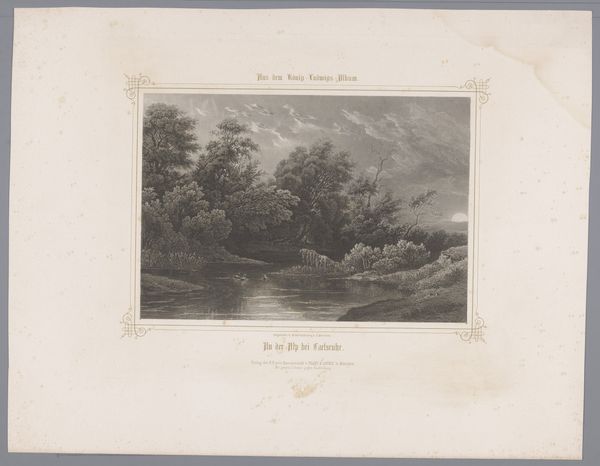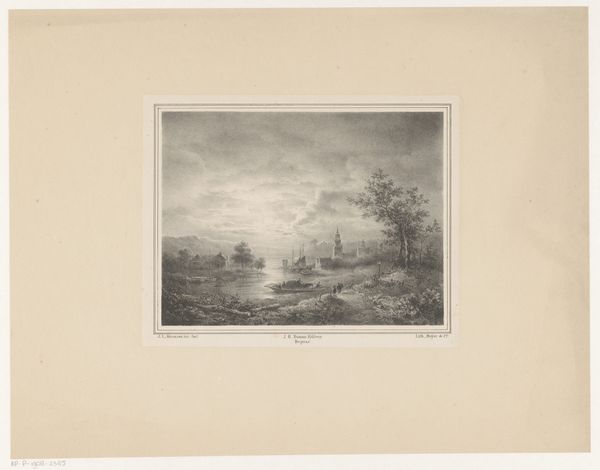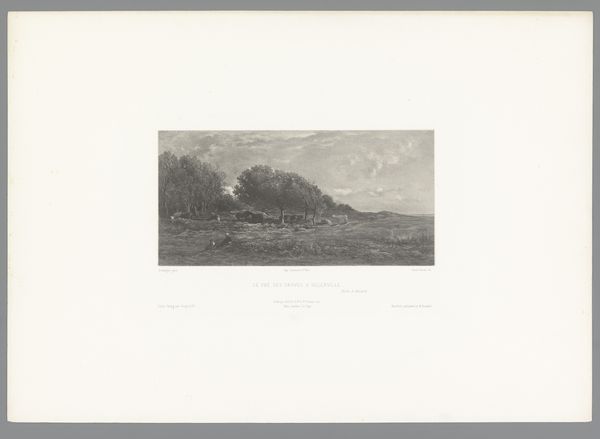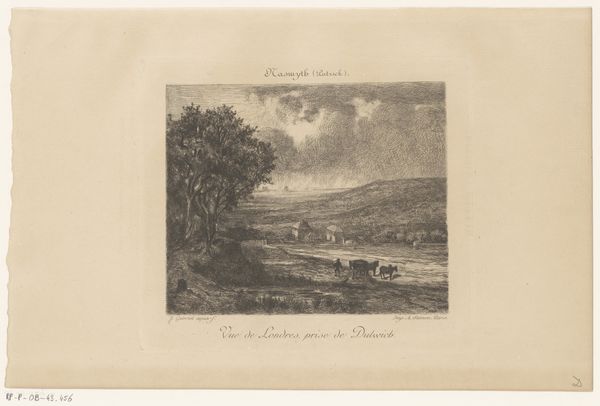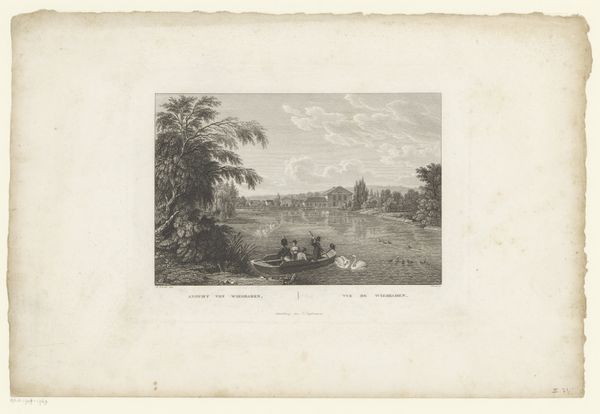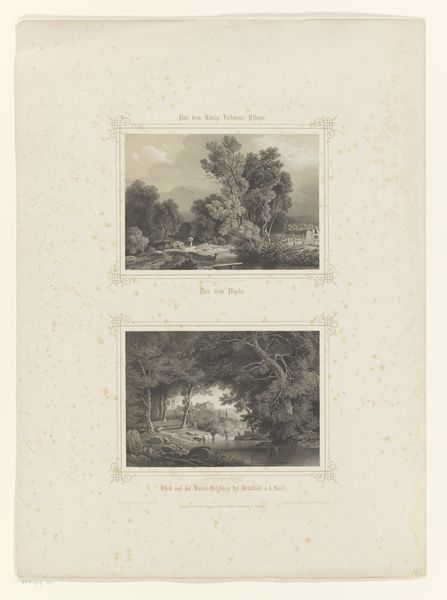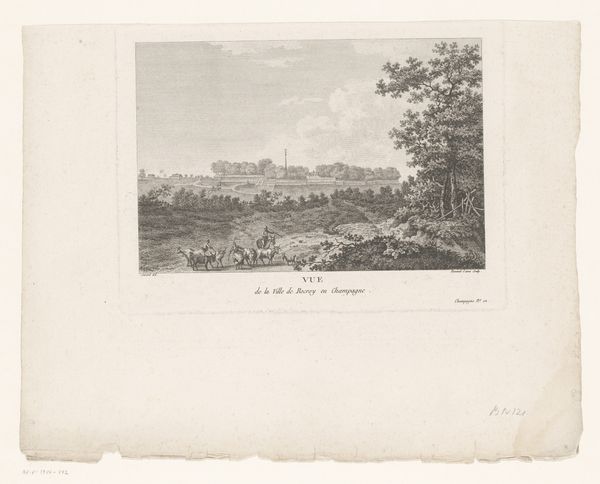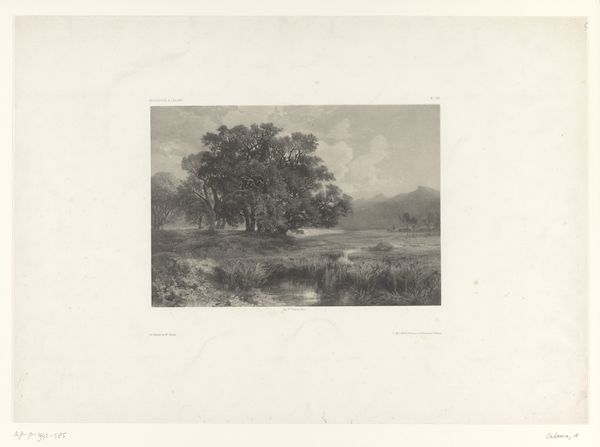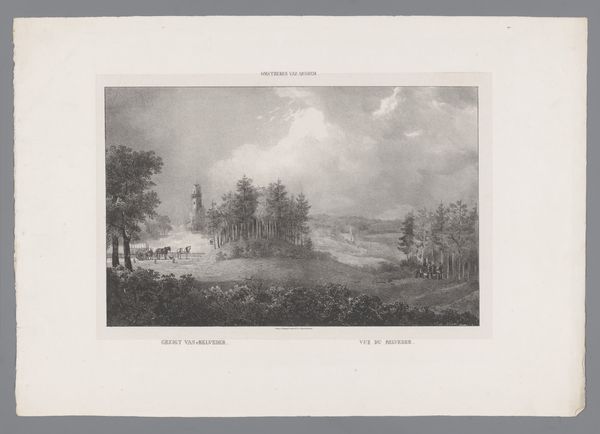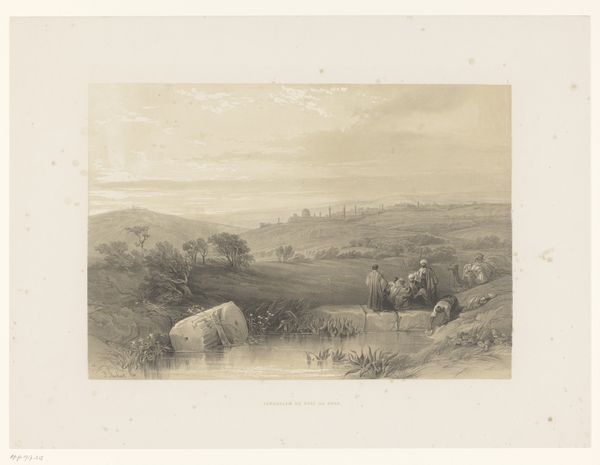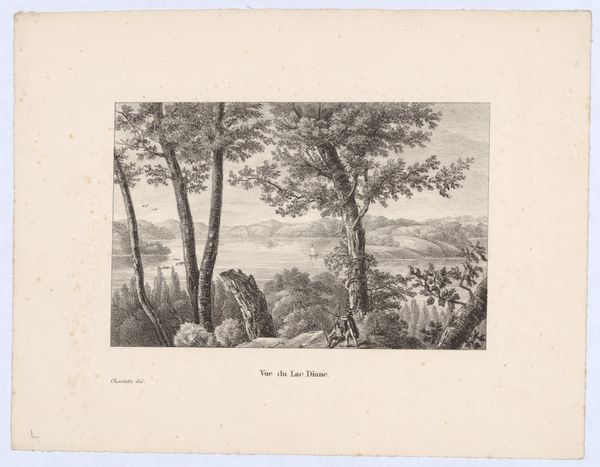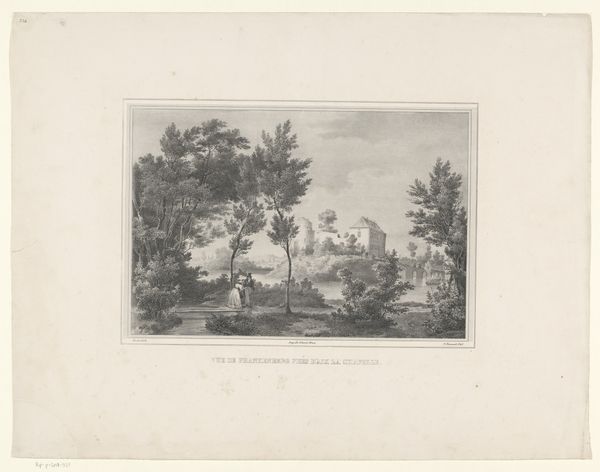
print, etching
# print
#
etching
#
landscape
#
realism
Dimensions: height 439 mm, width 600 mm
Copyright: Rijks Museum: Open Domain
Editor: Here we have Carl Friedrich Würthle's "View of Lake Chiemsee," an etching from the 1850s. I find it very still and peaceful. What catches your eye, and how would you interpret this work? Curator: It is serene, isn't it? But beyond the surface, this landscape whispers of complex social narratives. Consider the romanticization of nature during this period. Whose nature was being romanticized? Was it accessible to all, or only a privileged class? How do representations of the land uphold or challenge existing power structures? Editor: That's interesting; I hadn't considered that. It seems very straightforward at first glance. Curator: Look closer. What labor or lack thereof, is depicted? Do we see signs of industry, farming, or human impact beyond leisurely figures? Landscape painting often obscures the realities of land ownership and use, perpetuating idealized, often exclusionary, visions of rural life. Also, Würthle lived through a time of significant political upheaval; do you see any of that reflected here? Editor: I suppose the lack of any visible tension could be interpreted as a deliberate choice, a way of sidestepping the political turmoil of the time. It almost feels like a form of denial. Curator: Exactly! And that denial, that emphasis on idealized beauty, has its own implications. By focusing solely on aesthetic pleasure, the artist potentially silences other, perhaps less palatable, truths about society. It becomes a conscious or unconscious endorsement of a certain social order. Editor: I see your point. It’s more complicated than I initially thought. Thank you for opening my eyes to these hidden layers. Curator: My pleasure. It’s through these dialogues that we can truly understand art’s role in shaping our perceptions of the world.
Comments
No comments
Be the first to comment and join the conversation on the ultimate creative platform.
